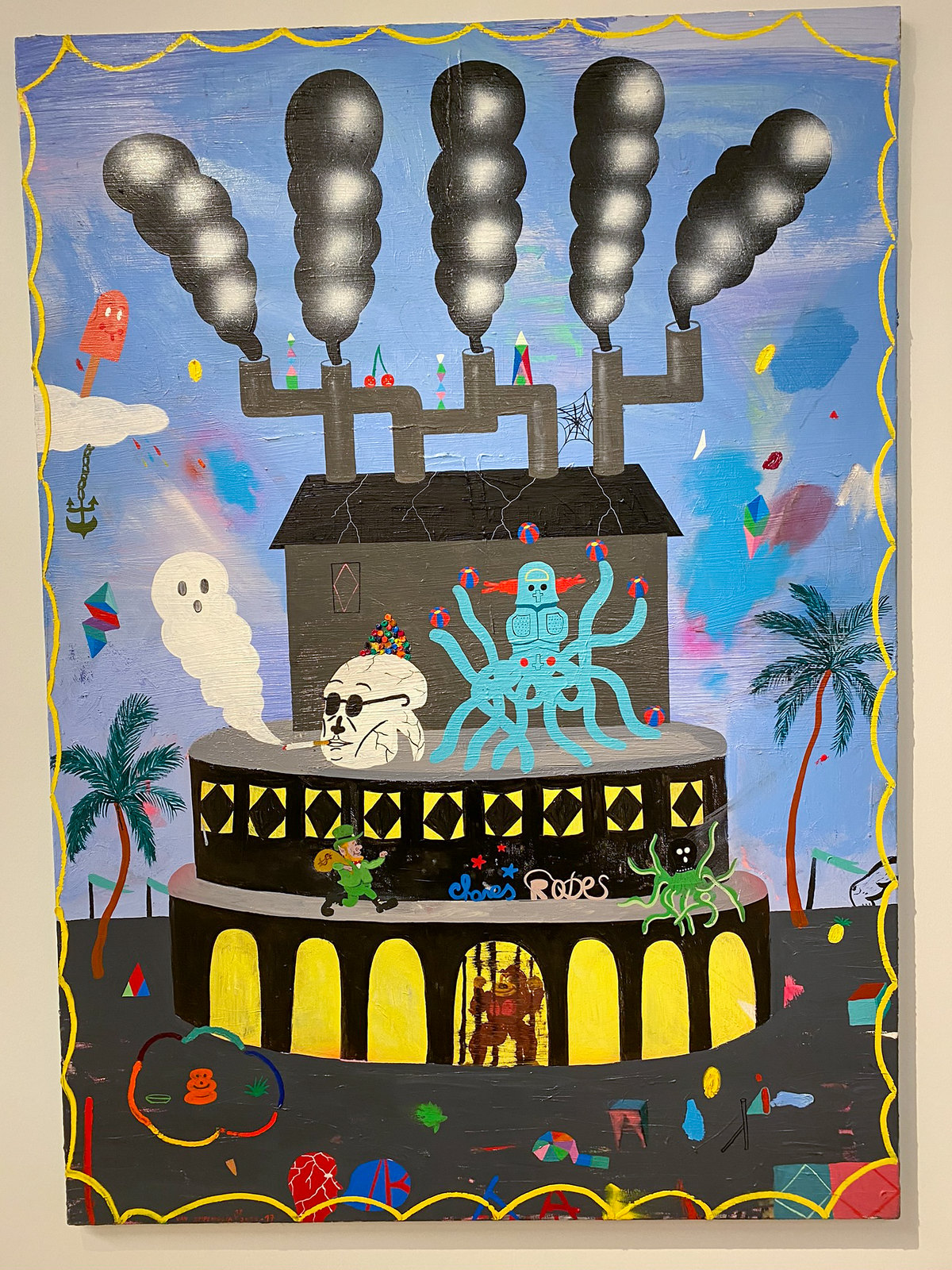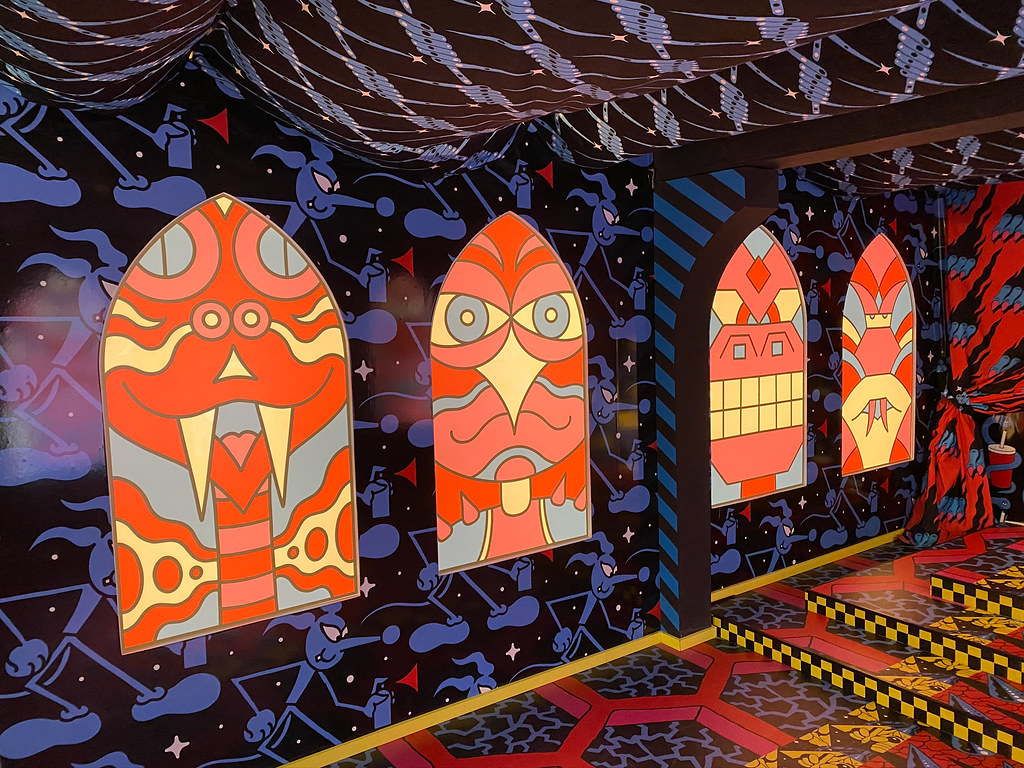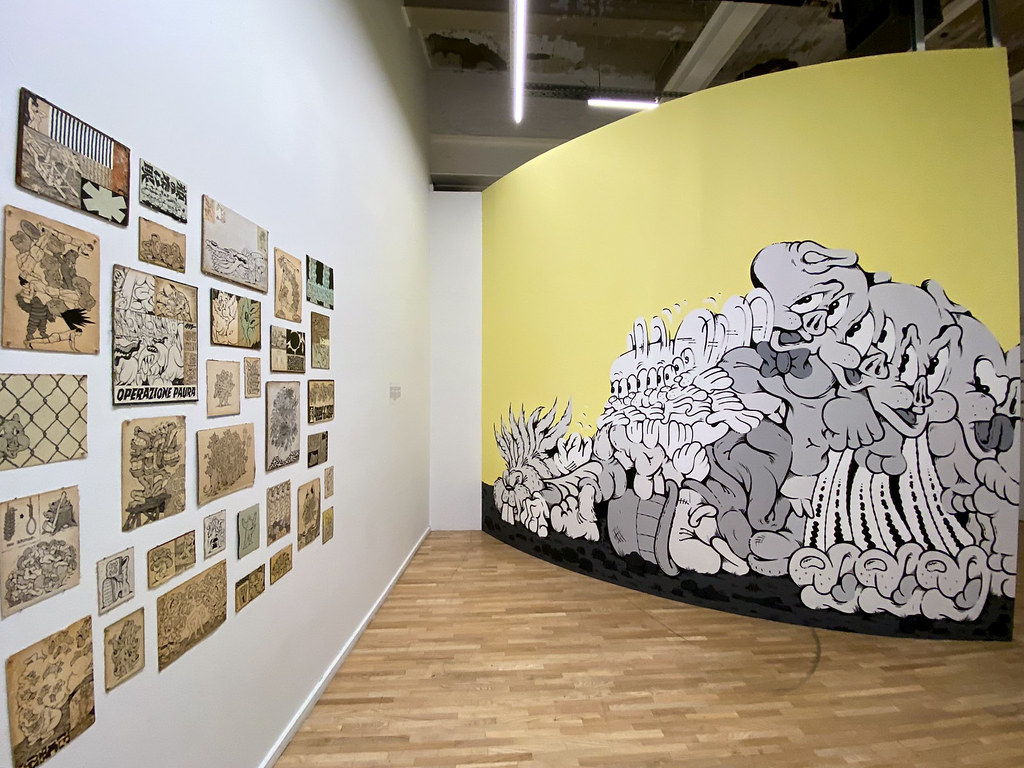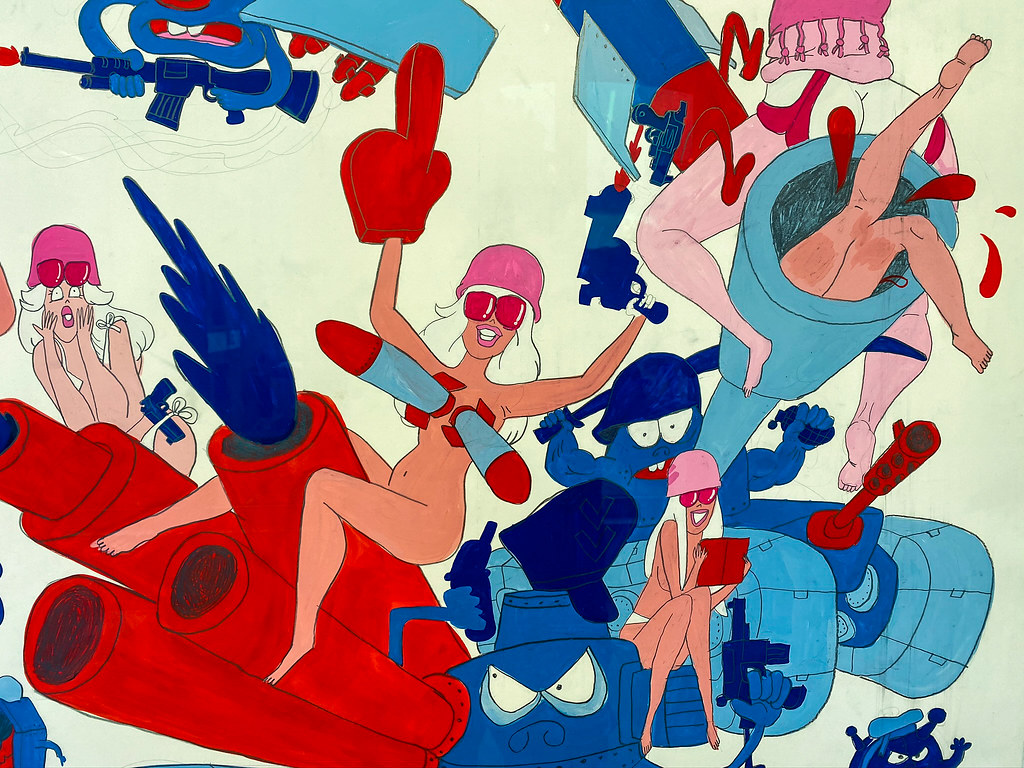Located on the emblematic site of the former Belle-Vue brewery, The MIMA (Millennium Iconoclast Museum of Art) is an all new contemporary art museum dedicated to Culture 2.0. With their latest “Zoo†exhibit, you are invited to enter an anthropomorphic universe where animals come out of cages to see what these furry or feathered characters tell us about Humans.
This visually very strong exhibition presents the work of eleven international artists from all walks of life: graphics, illustration, graffiti, tattoo, etc. Sections of art too often neglected. Here a carnivorous smile crunches a critique of society, there it expresses our bestiality. Suggestive and satirical, this always pop culture exhibition prompts spectators to take another look at their own nature and their place in this world.
This joyfully colorful wild vision of society exhibit is until August 30 in Brussels.
Staring with the wild signature style of Swedish artist @Finsta
Piet Parra (NL) is visual artist, former professional skateboarder, graphic artist, fashion designer and musician he is a jack of all trades. His aesthetics combines a talent for the visual with a poetics of the absurd where characters and freehand typography are discretely intertwined. The Dutchman is also the brilliant creator of the MIMA logo!
His art is easily recognized by the funny bird-headed characters that are his trademark

A closer look at Piet Parra’s take on Tintin and Snowy from Hergé

Based in Los Angeles, Steven Harrington explores the psychedelic pop scene. His works are rooted deep in the California hippie culture. In his creation below, he envisions a wolf visiting his own universe in his painting, which morphs into a “living” sculpture. The message conveyed by him is: “Choose the role you want to play in life, it is your actions that define you.”

Marti Sawe is a Spanish artist that paints and sculpts by collage, superimposition and contrast of colors. The patchwork of techniques and collage come together into a global subject that is recognizable at first glance used by the artist to deliver a critical message about the society we live in. His themes often portrait the invasion of technology in our lives and our resulting distancing from nature. The artist delivers a reflection on the purpose of technology, the overdose of social networking and the symbolic hijacking of the image of the animal to exploit emotions when our humanity is driving them to brick of extinction.



Pablo Dalas is a French visual artist and tattoo designer exploring the aesthetics of old animated movie characters. He loves to distort his subjects with an illusion of rapid film movement, known as smears in animated films. The excessive repetition of the effect gives a nightmarish taint to a childlike universe that is normally reassuring. By hijacking Disney aesthetic, which has been fabricating children’s dreams for almost a century, Pablo Dalas critics our immature society locked in a fantasy worldview that remains cut off from reality and its responsibilities.

Rhys Lee (Australia) is a Melbourne artist that specializing in hybrid totem figures on canvas or in ceramic. The Artist’s works are infused with a graphic presence of the cartoon character, bordering on grotesque and macabre. His strokes are fast and spontaneous with great freedom. These qualities recall the urgency and vitality so present in graffiti, something he explored intensely during the ’90’s when he was out as a street artist.
Russell Maurice (UK) is English artist and a leading figure of a pictorial movement named the “Comic Abstraction movement” who takes from the aesthetics of the earlier part of our 20th century animations. Artists who identified with this movement, usually come from a street graffiti background .
Todd James (US) is a New York artist that first gained notoriety under the alias REAS as a young graffiti street artist in the earlier portion of the 1980’s. Today his art mostly depicts cartoons. He was part of the exhibits: “Beautiful Losers”, “Street Market” and “Art in the Street”, which were the precursors that knocked open the doors of contemporary art to artists from street subcultures. The art he chose for this particular exhibit expose the military-industrial lobby of which the American dream was based upon.

Ryan Travis Christian (US) With great talent, this Chicago-based artist portraits a dysfunctional society. His drawings are evocative of old cartoons, scorned for committing desecrating the innocence that covers the eyes of young. Through the use of vintage cartoons, he both celebrates and denouces the American model. He blames the conformism of the individual and his stereotypical view of the world as manufactured by the entertainment industry. The cartoons also tackle social issues such as drugs and violence immigration.
This Belgian artist identifies with the Lowbrow movement, a popular art movement that takes it’s origins from a mix of things: Underground comic books and video games, tikki culture, graffiti street art and tattoo… Lowbrow art is often includes humor, as is the work of artist here at times joyful and others sarcastic and mischievous. Often portrayed in a cheery patchwork of images with meanings superimposed on the canvas reflects the image of a Western culture that are recycled ad nauseum,



Artist Egle Zvirblyte (Lithuania) The XL curves of the women depicted in these drawings is an ode to a liberated and self-assured female sexuality. Egle’s work is both modern and pop, as if Matisse’s “Dance” had embarked on the Beatles’ “Yellow submarine”. The characters depicted are an hymn to life and hedonism. Zvirblyte has created for the ZOO Exhibit a labyrinth inspired by the “unicursal” model in Greek mythology.The art work is named the “temple of transmutation” and is separated into three distinct areas named: Celebration, Honoring and Ritual of transformation.



View from the open rooftop over the Canal in Molenbeek area
Uknown artist







































